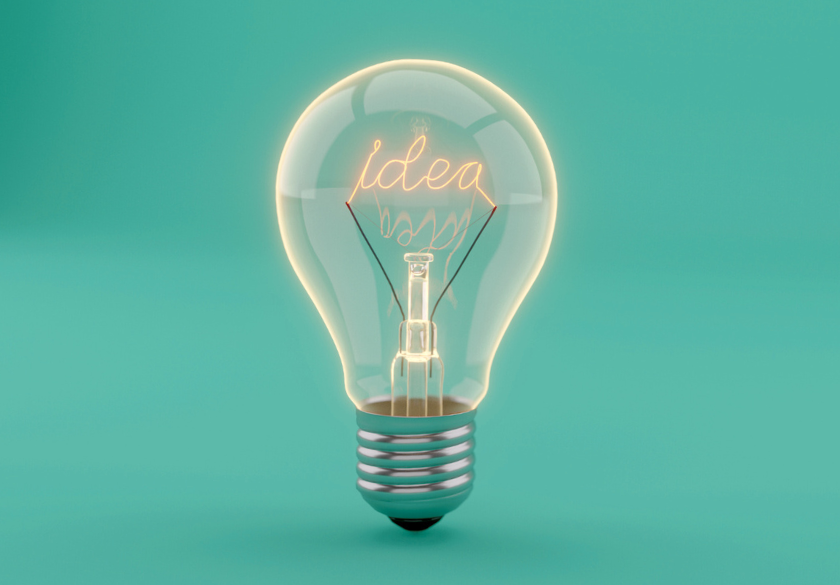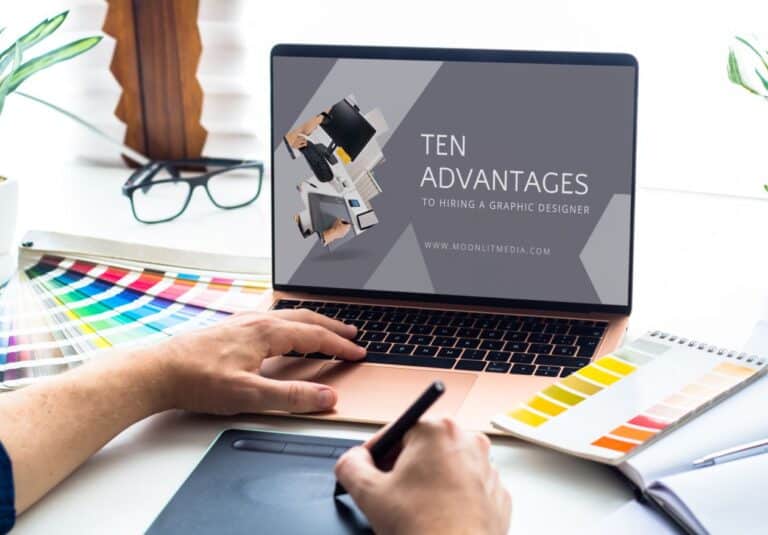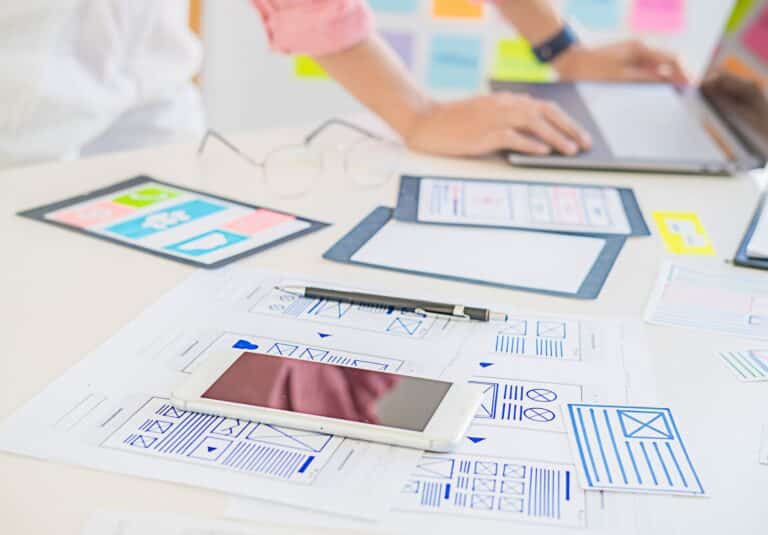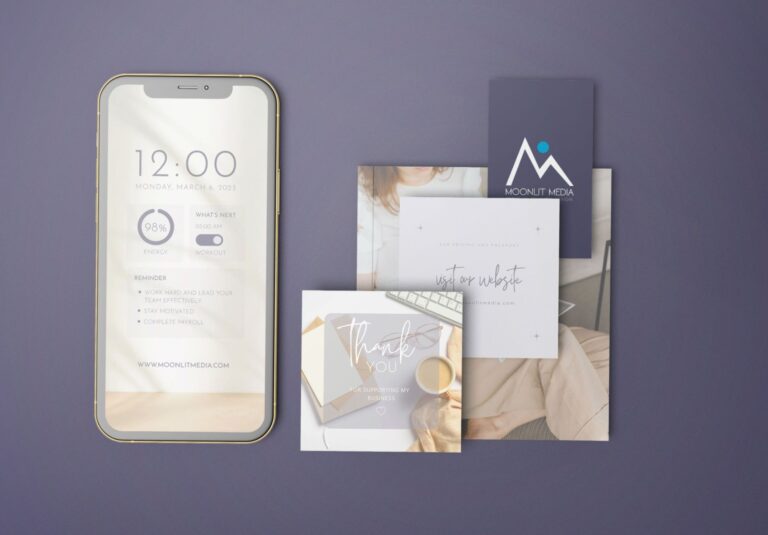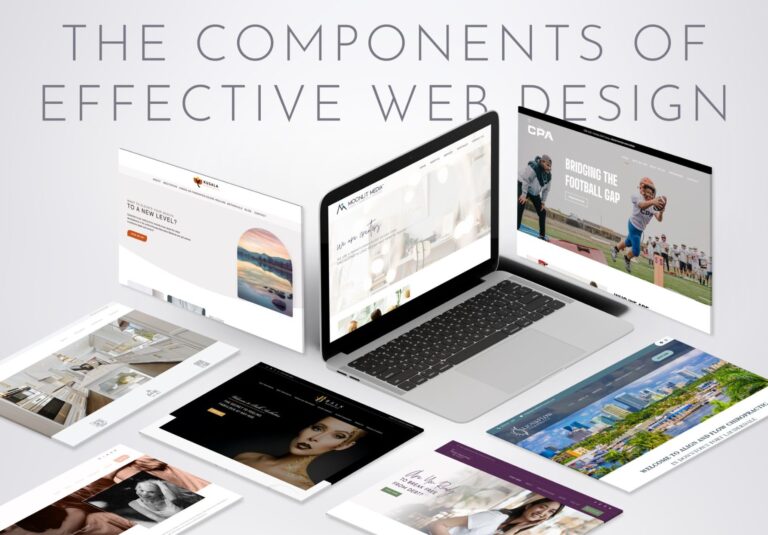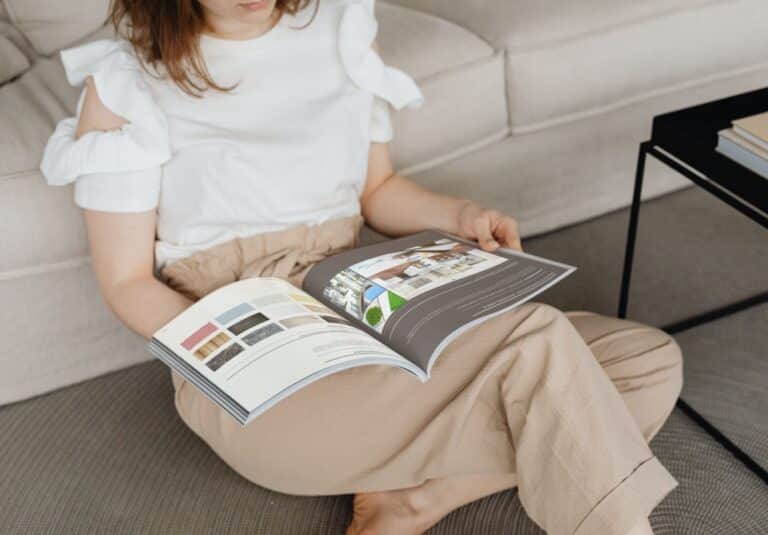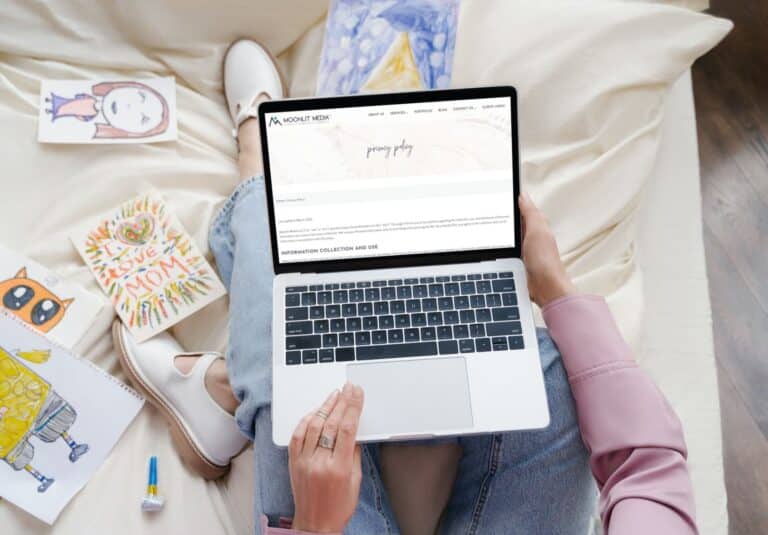AI design tools sometimes feel like magic to a small business owner. You type a phrase, hit enter, and within seconds you get a batch of visuals with your company name on them. And yes, it’s useful. AI can kickstart the creative process in ways that save time and open doors.
But here’s the key: AI should live in the brainstorming phase, not the final execution. We say this a lot, but it bears repeating: When it comes to creating visuals that truly represent your business, you need a human designer.

How AI Actually Helps Designers
AI isn’t the enemy of good design. When used correctly, it’s a powerful brainstorming partner that can jumpstart the creative process.
- Moodboards in Minutes
Need to explore different visual directions quickly? AI can generate dozens of style concepts in minutes. You can test out “minimalist tech startup” vibes one moment and “luxury spa retreat” aesthetics the next. This kind of rapid exploration used to take hours of Pinterest scrolling and Google image searches. - Style Prompts and Concept Testing
AI excels at “what if” scenarios. What if your coffee shop had a vintage nautical theme? What if your consulting brand felt more approachable? You can test these concepts visually before investing time in actual design work. - Breaking Creative Blocks
Every designer hits walls. AI can suggest color palettes you hadn’t considered or typography directions that spark new ideas. It’s like having an always-available creative sounding board that never gets tired of your questions.
The keyword here is exploration. AI speeds up the messy, early part of the process. It gets ideas flowing, so you and your designer don’t waste time circling the drain. But that’s where its job should end.

The Danger of Over-Reliance on AI
Here’s where things get tricky. If you use AI too much, your brand risks looking like everyone else’s.
- Generic logos. AI-generated logos often feel polished at first glance, but they lack soul. Look closer, and you’ll see familiar shapes and recycled patterns. That’s because AI doesn’t create something new, it remixes.
- No refinement. A strong design goes through layers of editing: adjusting proportions, testing colors, considering readability, and making sure it scales. AI doesn’t do that work. It gives you a draft and calls it done.
- Legal gray areas. Since AI pulls from existing work, you could accidentally end up with something that resembles another company’s logo (or even violates copyright). That risk isn’t worth it when your business depends on standing out.
When brands over-rely on AI, they don’t just miss out on originality. They risk trust. Customers can tell when a design feels “off” or generic. And once that impression lands, it’s hard to shake.
The Designer’s Role
A designer doesn’t just make things “look pretty.” They solve problems. They ask questions like: Who’s your audience? What values define your brand? How should people feel when they see your logo?
From there, they take inspiration, such as AI concepts, Pinterest boards, sketches, and they refine it. They adjust details, choose colors with intention, and build a system that works across every platform you use.
Think of it this way: AI gives you raw clay. A designer is the sculptor who shapes it into something meaningful. The magic is in the human touch, the choices that reflect your story instead of a random dataset.
When to Ditch Artificial Intelligence for the Real Thing
Think of AI like a Pinterest board or Google Image search. Great for gathering inspiration and exploring possibilities. Terrible as your final design solution.
Good AI Use Cases:
- Generating mood boards and style concepts
- Exploring color palettes and visual directions
- Creating rough mockups for internal discussions
- Brainstorming taglines or copy ideas
Risky AI Use Cases:
- Final logo designs
- Brand identity systems
- Print-ready materials
- Client-facing designs
Think of it like using Pinterest for wedding ideas. You can pin dresses, flowers, and venues all day. But when the big day comes, you’re not printing a photo off Pinterest and calling it your dress. You take those ideas to a professional who creates something that actually fits you.
Your AI concepts should follow the same path. Use them to get inspired, then hand them off to a professional who can turn that inspiration into a design that actually works for your business.
This approach gives you the best of both worlds. You get the quick exploration and cost-effective brainstorming that AI provides, plus the strategic thinking and professional polish that only human designers can deliver.

Turn Your AI Ideas Into a Real Brand
AI has its place (and it’s obviously not going anywhere). It can spark ideas, speed up exploration, and help you see possibilities you might not imagine on your own. But it can’t capture the heart of your brand. That’s the job of a designer.
If you’ve collected AI concepts you love, bring them to us. At Moonlit Media, we’ll take that inspiration and turn it into a polished, one-of-a-kind design that reflects your business, not just a prompt on a screen.

